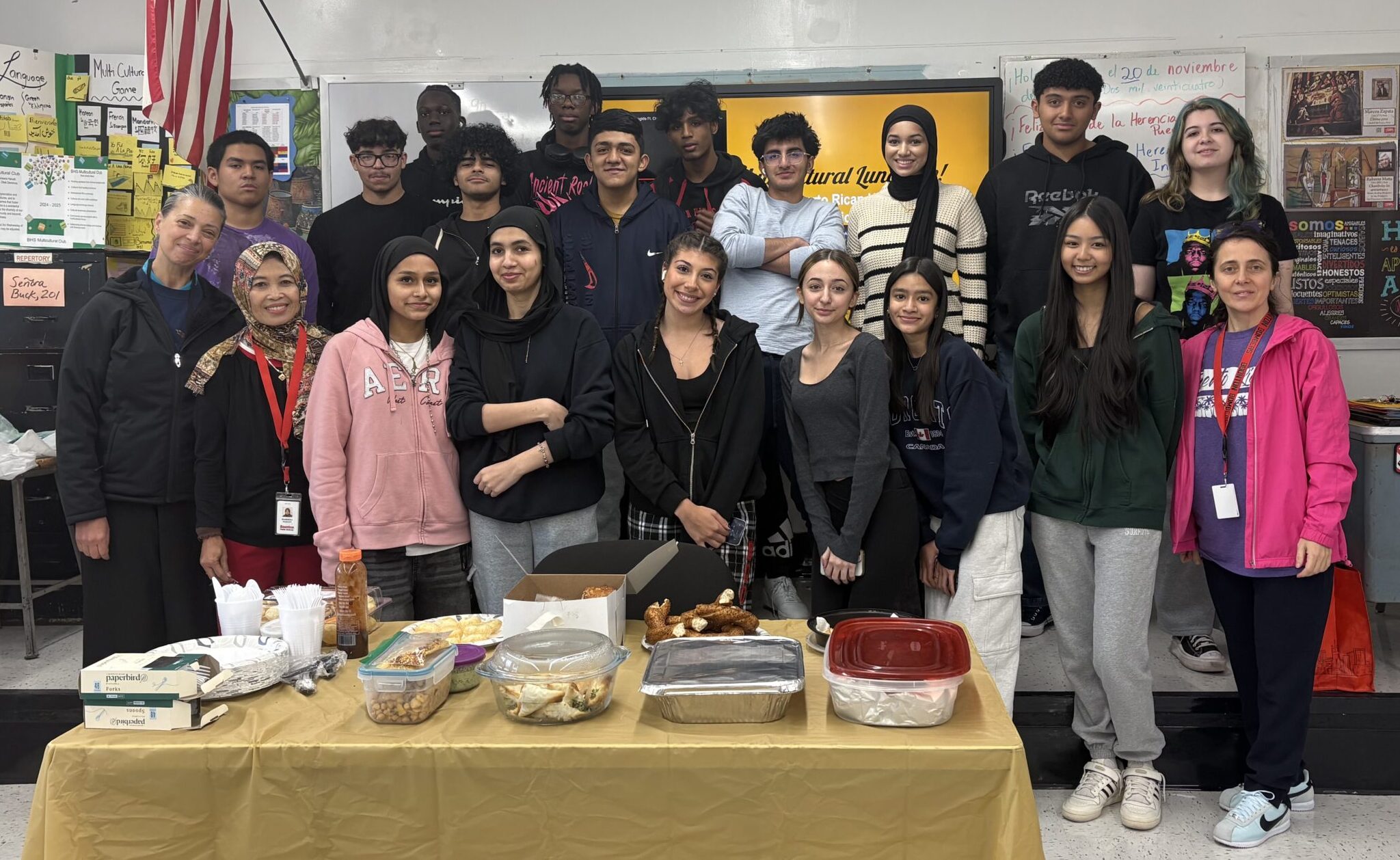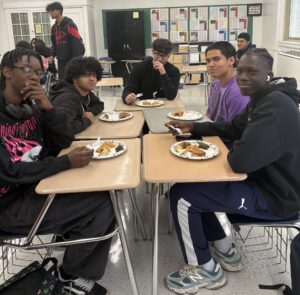
In the spirit of Thanksgiving, coming together and sharing favorite culinary traditions was the key “ingrediente” at the Multicultural Club’s luncheon on Wednesday, Nov. 20, 2024.
Celebrating the rich cultural heritage of our Boonton Bomber family and community, club members and their student guests joined in the festivities, sharing some of their favorite dishes during lunch in Room 201.
Participants enjoyed a variety of holiday treats, many of which were Latino in origin. Samuel Morales brought in quesadillas de guava, a tasty pastry baked with tropical fruit and cheese, and a specialty from Puerto Rico.
Dennis Sandoval shared chicken and beef empanadas. Mrs. Hanafi served stuffed grape leaves, a Middle Eastern specialty. Mrs. Demirors shared a Turkish Simit, a sesame-seeded baked treat. Olivia Edwards prepared a delicious Bolivian pastry with her father’s recipe.
Khadija Kashaf, who hosted the event, said that she “was honored to be chosen to host this event as it brought many cultures together.”
“I’m so grateful a lot of people came to the luncheon and participated in it,” said Kashaf, who prepared pani puri, a delicious traditional snack with origins in South Asia.
Heela Nasiri prepared her famous samosas. Olivia Edwards baked the Bolivian pastry Tawa Tawa using her Dad’s recipe. Aqsa Awan also prepared samosas and Zainab Chaudhry served incredibly light and crispy Pakoras, aka vegetable fritters. Pakoras are often served at the Iftar table during Ramadan.
Señora Buck shared pastel de calabaza (pumpkin pie), a Thanksgiving favorite, and arroz con leche (rice pudding), a dessert that is common in the Spain, Latin America and the Middle East, among other regions. Sunny MacDonald also shared her grandmother’s delicious rice pudding.
The origin of rice pudding is difficult to pinpoint as rice has been a principal ingredient in dishes from China, India, and the Byzantine Empire. It is thought that Muslims brought this dessert to Spain during their “Conquista.” This sweet treat then accompanied the Spaniards to the Americas and soon became a culinary favorite in Mexico, Central and South America as well as many Caribbean Islands, sparking many variations often prepared with raisins, coconut milk, shredded coconut, vanilla flavoring and cinnamon. Coconut milk may have been used as it was an available local substitute for cow’s milk.
Robert Marius Niyade, Rosbin Mejia, Dawood Adeel and Sunny McDonald chose from the tasty savory options. Stuffed grape leaves were offered and they are a specialty throughout many countries.
Stuffed grape leaves may have originated in Turkey, as the word “dolma” comes from the Turkish verb dolmak, meaning “filled” although many cultures claim to have invented the dish and increased its popularity, sauteing rice with spices and rolling them into grape leaves and serving them both warm and cold.
Globalization has increased the popularity of “dolma” from the Mediterranean, North Africa, the Middle East and Asia to other parts of the world. Many families have their own variations featuring seasonal and local ingredients. Often the dish is served with feta cheese sprinkled with lemon juice, olive oil, and a little yogurt. Club members and their guests had different opinions on this dish.
Genesis Milla interviewed participants on their experiences at the luncheon. Sunny McDonald brought arroz con leche that her grandmother prepared the night before the event. Dennis Sandoval felt that “It’s better homemade because everything you make at home is better than getting it in the store.”
According to most of the club’s members and guests, the food from the various countries was “really good” and everyone was able to try at least one dish that they may not have tasted before.
Regarding the grape leaves, Dennis Sandoval has tried tamales, which are stuffed corn leaves commonly made in Honduras. In Puerto Rico, they have “pasteles,” which are stuffed banana leaves. The difference, Samuel Morales and Dennis Sandoval noted, is that you do not eat the leaves for tamales or pasteles.
Those in attendance look forward to trying different cuisines at future club events to expand their culinary knowledge and cultural appreciation.
Genesis Milla contributed to this article.

